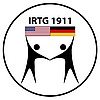B1 (2013 - 2016) – Immune sensing of Toxoplasma gondii infection by C5aR and CCR5 pairing
Project:
The recognition of the protozoan parasite T. gondii involves both MyD88-dependent and independent pathways. As such, the parasite-secreted molecule cyclophillin-18 (C-18) binds to and activates cysteine-cysteine (CC) chemokine receptor 5 (CCR5), which belongs to the large superfamily of G-protein- coupled receptors (GPCRs). CCR5-deficiency results in decreased IL-12 production and loss of protective immune responses. Similarly, the complement fragment C5a regulates Th1 adaptive immune responses through engagement of its G-Protein-coupled C5aR (CD88) and modulation of IL-12 family cytokine production from antigen-presenting cells. Interestingly, CCR5 and C5aR can form heterodimers in transfected cell lines suggesting that C-18 may exert its immunostimulatory functions in T. gondii infection not only through CCR5 but also through C5aR activation. Based on these findings, we hypothesized that CCR5/C5aR heterodimer formation may also occur in DCs, that C-18 not only interacts with CCR5 but also with C5aR and that such an interaction serves as a novel sensing mechanism that promotes protective immunity against T. gondii infection.
Aims:
- Define the C-18-mediated association between C5aR and CCR5 and the binding points within the complex comprising the extracellular loops of CCR5, the C5aR and C-18.
- Identify the signaling pathways and the cytokine/chemokine pattern activated by the C-18- induced heterodimerization of CCR5 and C5aR in DCs.
- Delineate the impact of C-18-induced CCR5/C5aR heterodimer formation on the T. gondii infection in vivo.






